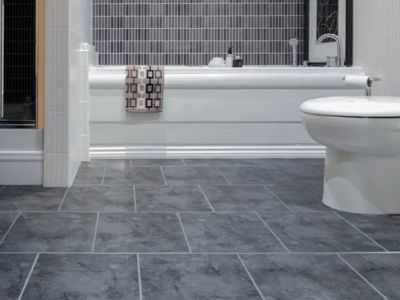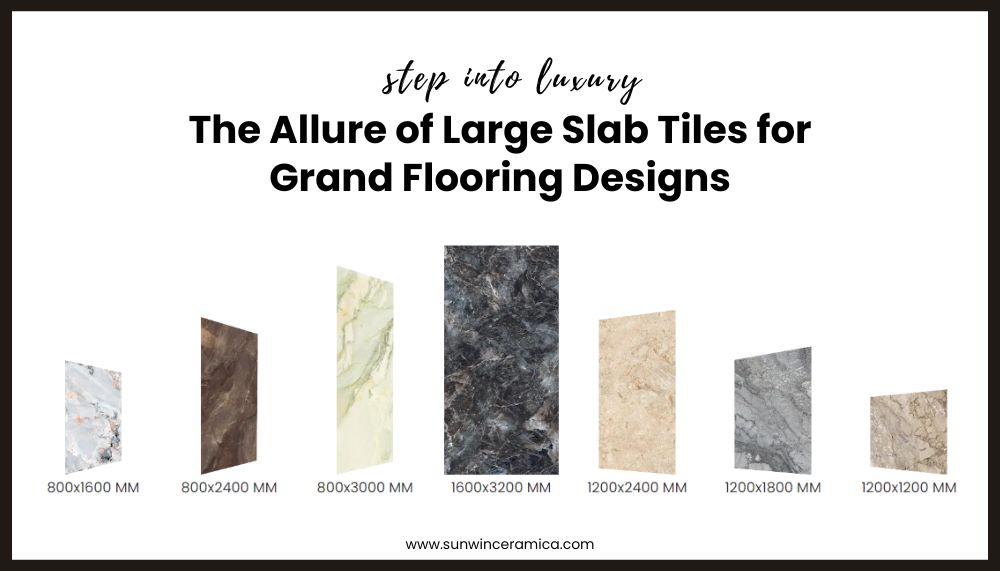
When it comes to choosing tiles for your bathroom, the debate often narrows down to two popular options: porcelain and ceramic. Both types of tiles have their own set of advantages and can be used effectively in bathroom spaces.
However, when it comes to durability, water resistance, and overall performance, porcelain tiles come out on top. But here we will not reach any such conclusion. Instead, we'll compare key features of these two types of tiles that are crucial for bathrooms.
Let’s Find Out Which Tiles Is Best For Your Bathroom
1. Water Resistance

It is highly important in bathrooms. Because bathrooms are naturally moist environments, water resistance is a crucial factor when choosing tiles.
Porcelain Tiles
Porcelain tiles are highly water-resistant due to their low water absorption rate. In fact, these tiles have a water absorption rate of less than 0.5%. This means they are practically impervious to water, making them ideal for bathroom floors and walls.
Even in areas with high humidity or direct water exposure, such as showers, porcelain tiles perform exceptionally well.
Ceramic Tiles
Ceramic tiles, while still water-resistant, have a higher water absorption rate compared to porcelain. This makes them slightly less suitable for areas with constant moisture, like bathroom floors or shower walls.
Over time, the higher porosity of ceramic tiles can lead to issues like water damage, mold, or mildew if not properly sealed and maintained.
2. Durability and Longevity

Durability is another key consideration, especially in high-traffic areas like bathrooms. Your tiles need to stand up to daily wear and tear, and porcelain tiles have the edge in this category.
Porcelain Tiles
Thanks to their high density and hardness, porcelain tiles are incredibly durable. They are resistant to scratching and cracking and can stay tough even under heavy use. This makes them a great choice for bathroom floors.
They can endure frequent foot traffic, dropped objects, and even exposure to cleaning chemicals. Porcelain tiles also retain their appearance for longer periods. Thus it ensures your bathroom stays looking fresh and new for years.
Ceramic Tiles
Ceramic tiles, while still durable, are not as tough as porcelain. They are more prone to chipping and cracking, especially in high-traffic areas or when heavy objects are dropped on them.
Over time, the glaze on ceramic tiles can wear down, making them more susceptible to scratches and stains. This can lead to a bathroom that looks worn or dated more quickly than one tiled with porcelain.
3. Maintenance and Care

No one wants to spend hours cleaning their bathroom tiles, so ease of maintenance is an important factor to consider.
Porcelain Tiles
Porcelain tiles are relatively easy to maintain. Their non-porous surface resists stains, making spills easy to wipe up. It is also resistant to mold and mildew, which are common concerns in bathrooms.
Regular cleaning with mild detergent and water is usually enough to keep porcelain tiles looking their best. Plus, since they are less likely to chip or crack, you won’t have to worry about frequent repairs or replacements.
Ceramic Tiles
Ceramic tiles also offer easy maintenance, but they require a bit more care than porcelain. Because they are more porous, they can stain more easily if spills are not cleaned up quickly.
The grout lines between ceramic tiles may also need more frequent cleaning and sealing to prevent water from seeping in and causing damage. Over time, you may need to reapply sealant to keep these tiles in top condition.
Takeaway
When it comes to choosing between porcelain and ceramic tiles for your bathroom, porcelain is the superior option. Its water resistance, durability, low maintenance, and design versatility make it the ideal choice for creating a bathroom that not only looks great but also stands the test of time.
While ceramic tiles may be cheaper upfront, the long-term benefits of porcelain tiles make them worth the investment.
You May Also Like:



















